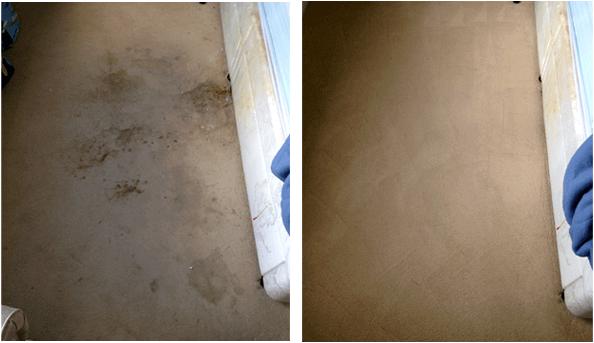The Pros and Cons of Scalp Micropigmentation (SMP)
Scalp micropigmentation (SMP) is an increasingly popular solution for individuals dealing with hair loss. It involves the application of pigment to the scalp in tiny, precise dots to mimic the appearance of hair follicles. This cosmetic procedure creates the illusion of a closely shaved or buzz-cut hairstyle, offering an effective option for those with thinning hair, baldness, or scalp scars.
While SMP offers many benefits, it’s important to weigh both the pros and cons before deciding if it’s the right solution for you. Let’s take a closer look at the advantages and disadvantages of scalp micropigmentation.
Pros of Scalp Micropigmentation (SMP)
1. Non-Invasive and Safe
One of the key benefits of SMP is that it’s a non-invasive procedure. Unlike hair transplants, there’s no surgery involved, and the process is generally pain-free, with only mild discomfort reported by some clients. The procedure doesn’t require incisions or stitches, which means there’s minimal risk of infection or complications.
Because SMP only involves pigment being applied to the scalp’s surface, it’s a safe treatment for most people. The use of hypoallergenic pigments and sterilized equipment also ensures a low risk of adverse reactions.
2. Immediate Results
Unlike other hair loss treatments, such as medications or hair transplants, which can take months or even years to show results, SMP offers immediate visual improvement. Once the procedure is complete, the scalp instantly appears fuller, giving the look of a natural buzz cut or a denser hairline. This is a huge advantage for those looking for a quick solution to hair loss without the waiting period.
3. Low Maintenance
SMP requires very little maintenance once completed. Since it mimics the appearance of shaved hair, there’s no need for special shampoos, conditioners, or styling products to maintain the look. The pigment does not fade easily, and touch-ups are typically only required every 3-5 years to maintain its fresh appearance.
For men and women with busy schedules who want a low-maintenance solution to hair loss, SMP offers a hassle-free way to maintain a consistently groomed look.
4. Cost-Effective
Compared to other hair loss treatments like hair transplants, SMP is relatively affordable. Hair transplants can cost thousands of pounds and may require multiple procedures, whereas SMP is typically a one-time investment. With its long-lasting effects and minimal upkeep, SMP can be a more cost-effective solution in the long run for individuals seeking hair restoration.
5. Covers Scalp Scars
For individuals who have scars from hair transplants, injuries, or other scalp surgeries, SMP can effectively camouflage scars by blending the area with the surrounding hair follicles. This gives the scalp a more uniform appearance, making scars far less noticeable.
6. Effective for Various Types of Hair Loss
SMP is a versatile solution that works for different types of hair loss, whether it’s caused by male pattern baldness, alopecia, or thinning hair. It can also be used to fill in thinning areas on women, creating the illusion of denser hair where needed. For individuals who may not be suitable candidates for hair transplant surgery or medications, SMP provides a reliable alternative.
Cons of Scalp Micropigmentation (SMP)
1. The Buzz-Cut Look is Permanent
One of the potential downsides of SMP is that it creates the appearance of a closely shaved or buzzed head. While this can be a flattering look for many people, it does limit your hairstyle options. If you prefer the look of longer hair, or if you plan to grow your hair back in the future, SMP may not be the best option since the procedure doesn’t add actual hair to the scalp.
If you decide you no longer want the buzz-cut look, removing the pigment would require laser tattoo removal, which can be costly, time-consuming, and uncomfortable.
2. No Hair Growth
It’s important to understand that SMP is a cosmetic solution; it doesn’t stimulate hair growth. While it gives the appearance of a full head of shaved hair, the underlying hair loss will remain unchanged. If you’re seeking a solution that encourages actual hair regrowth, you might want to explore options like hair transplants or medications such as minoxidil.
3. Multiple Sessions May Be Required
Although the results of SMP are immediate, achieving the desired look may require multiple sessions. Typically, clients need 2-3 sessions to build up the density and depth of the pigment. This means you’ll need to commit time to the procedure over several weeks to achieve the best results.
Each session can last several hours, depending on the size of the area being treated, so it’s important to plan accordingly.
4. Pigment Fading Over Time
While SMP is designed to be long-lasting, the pigment may gradually fade over time due to sun exposure, skin regeneration, or the natural breakdown of the pigment. Although touch-ups are infrequent, they will be necessary every few years to maintain the colour and freshness of the scalp. This may be a consideration for those who want a more permanent, maintenance-free solution.
5. Limited to a Specific Look
SMP is perfect for those who are happy with the buzzed or closely cropped hair look, but for people who prefer more flexibility in their appearance, it might feel limiting. SMP is not a treatment for those looking to have a longer, thicker head of hair. The shaved look is a specific aesthetic, and individuals who want to switch hairstyles frequently may find SMP restricting.
6. Potential for Unnatural Results if Not Done Correctly
The success of SMP largely depends on the skill and experience of the practitioner. Poorly executed SMP can result in uneven dots, unnatural hairlines, or overly dark pigmentation, leading to an artificial or “painted-on” appearance. It’s crucial to choose a skilled professional with a proven track record to ensure that the results look natural and flattering.






Comments